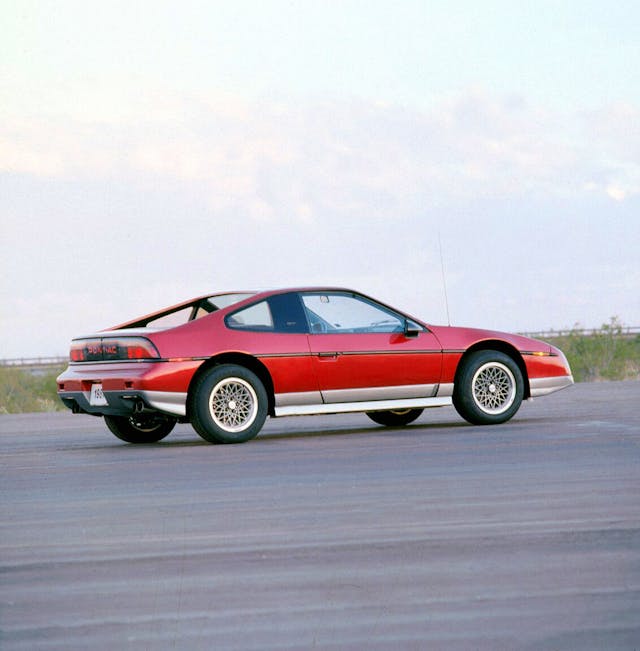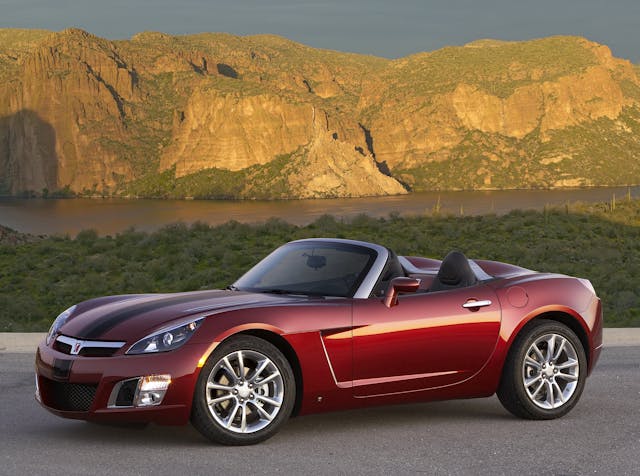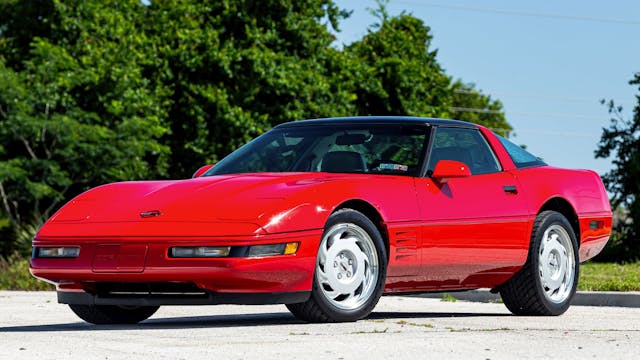Declare Independence From Mediocrity With These Three Underrated American Sports Cars
In the postwar sports car scene in America, European cars were more numerous and more popular. A generation later, Japanese sports cars proliferated yet home-grown choices remained limited. In fact, you could credibly argue that the number of true, two-seater American sports cars can be counted on two hands. Among them, there are three overlooked and somewhat misunderstood but very entertaining choices.
1988 Pontiac Fiero GT

The original Fiero was sold to GM bean counters as an efficient two-seater “commuter” car. Because power and sporty handling weren’t part of the original design brief, the 4-cylinder Iron Duke-powered 1984 Fiero contained a mish-mash of suspension parts from GM underachievers, like the Chevy Chevette and Pontiac Phoenix. It was at least exceedingly thrifty on fuel and actually quite safe despite some engine fires on early cars that tarnished its reputation. But sporty it was not.
Somehow, the Fiero found enough advocates in the vast GM bureaucracy to benefit from some actual development—a decently powerful and growly V-6 and a Getrag 5-speed were quickly added, along with a new flying buttress fastback body style. But the chef’s kiss came with the 1988 Fiero GT, with its revised suspension that was similar to what the engineers wanted in the beginning. While not designed by Lotus (as has been often stated), it certainly bore some of the hallmarks of their designs. Alas, GM killed the Fiero at the exact moment that they got it right, so the Fiero only lived up to its full potential for one year.

Because of its one-year greatness, the 1988 GT is the most valuable of the Fiero family, with a condition #2 (“excellent”) value of $22,000 compared to $17,200 for a 1986 GT. The #3 (“good”) condition value is a rather cheap $12,300. The 1988 Fiero Formula, which has most of the GT equipment but with less flashy styling, is cheaper still with a #2 value of $12,400 and a #3 value of $7700. And this is for a wedgy mid-engine two-seater with a V-6 in a 5-speed. Imagine how much it would be worth if it were European or Japanese.
2007-2009 Saturn Sky Redline Roadster

The Saturn Sky may well be one of the most overlooked sports cars in history. It’s the forgotten twin to the Pontiac Solstice, and many think that it’s the more handsome of the pair. While the 2.4-liter Ecotec-powered base model was somewhat unremarkable, the high-performance model—the Redline—was simply sensational. A new 2.0-liter direct injected and dual-scroll turbocharged engine offered 260hp (up from 177hp in the base car) and 260 lb-ft, while a limited-slip diff further added to the excitement. It was enough to push the Sky Redline to 60 in well under 6 seconds, while the classic rear-drive, front-engine layout and competitive price made it a real alternative to the Japanese and German small sports cars that dominated the segment.
With an excellent chassis, quick and communicative steering, and handsome styling, the Sky Redline should be remembered as one of the best American sports cars of all time. Motor Trend said that “the handling and the drivetrain” make the Sky Redline a true star. Alas, it left a legacy to last a lunchtime, and it seemed to disappear from memory along with the Saturn division itself in the wake of the Great Recession. None of this should stop you from seeking one out. Condition #2 values range from $21,300 to $23,600, and #3 values range from $14,600 to $16,900 depending on model year. The equivalent Pontiac Solstice GXP, which is more distinctive but less elegant than the Saturn, typically runs a few grand less.
1992-1996 Chevrolet Corvette LT1

The C4 (1984-96) generation of Corvette truly gets little respect. It was very nearly a clean-sheet design, and it certainly had the appearance of one, while some truly cool new tech would find its way into the car over its long production run. Although there were some shortcomings on the early cars, maybe the best thing to find its way into the C4 was the LT1 version of Chevy’s evergreen 5.7-liter pushrod V-8, introduced for the 1992 model year. More rev-happy, and pumping out an even 300 hp, it was a 55-hp leap over the L98 that preceded it and it made the complex, expensive and somewhat peaky DOHC ZR-1 feel almost redundant.
Road testers from the big-four mags of the day (Car and Driver, Motor Trend, Automobile, and Road & Track) were unanimous in their praise for the car, deeming it a massive improvement over the previous C4 Corvette. The chassis, which had seen significant improvement over the previous generation C3, remained more than up to the task, especially when working in tandem with Bosch ABS and traction control (the latter could be defeated by flipping a switch).
C4s, even the much better late LT1-powered cars, live in a somewhat uncomfortable middle ground price-wise, in that the subsequent C5 (1997-2004) Corvette is objectively a significantly better car for not much more money while the C3 that came before is a bit antiquated but also has a classic look and charm that the C4 lacks. Regardless, it’s positively criminal how undervalued these late C4s are. Really clean ones sell from the high teens to low-20s depending on year and body style, but a decent LT1-powered driver can be had for under 20 grand easily.
***
Check out the Hagerty Media homepage so you don’t miss a single story, or better yet, bookmark it. To get our best stories delivered right to your inbox, subscribe to our newsletters.



Cannot disagree with selections, however, I would add the Subaru SVX.
https://en.wikipedia.org/wiki/Subaru_Alcyone_SVX
https://en.wikipedia.org/wiki/Subaru_Alcyone_SVX
If you have packed on extra pounds as you have aged stay away from the C4.
MID ENGINE. Fiero and MR2. No others had that and it was GREAT to own one. I had a Fiero GT the first year available. Hearing that engine BEHIND you was other worldly. I loved that ride.